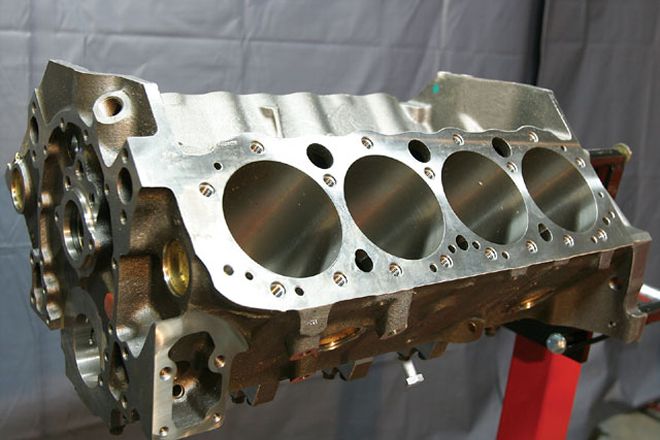
Editor's note: Long overdue, this multi-part story has been on our minds for more than three years now. For those of you who've often wondered when we were going to build a bad-to-the-bone stroker motor from scratch, this is it.
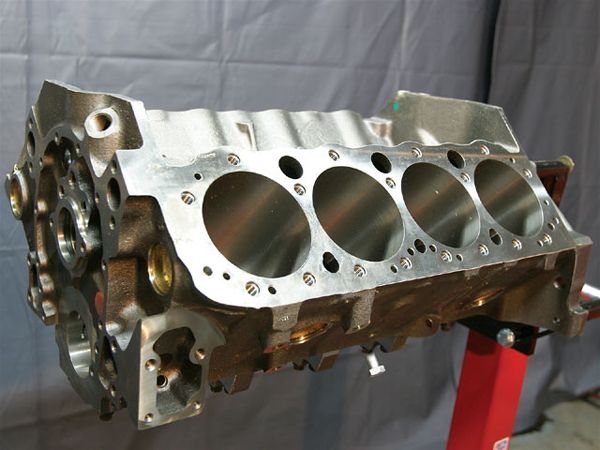 One of the many reasons we like the Bowtie Sportsman block better than other blocks on the market is because it features siamesed cylinder walls, which allows for additional cylinder-bore volume without worrying about running out of material. If you bore out a non-siamesed block, typically it won't cool well. We plan to punch our cylinders to .030 inch over.
One of the many reasons we like the Bowtie Sportsman block better than other blocks on the market is because it features siamesed cylinder walls, which allows for additional cylinder-bore volume without worrying about running out of material. If you bore out a non-siamesed block, typically it won't cool well. We plan to punch our cylinders to .030 inch over.
We admit it-tech-heavy motor buildups rarely grace these pages. It is because such articles require a significant investment in the form of research, planning, and general legwork. Let's face it-most of us gearheads have to balance our hobbies with our daily routine, family, and budgetary constraints. This lifestyle leaves very little time for component research and engine blueprinting. Then, there is always that ever-present shortage of cash that seems to prevent ordering the necessary parts. Luckily, in this go-around, a few generous industry leaders such as GM Performance Parts, Edelbrock, and Summit Racing were willing to support the cause. With this introduction, we plan to establish a realistic end-all goal for our engine and focus on the best options available to get us there. Following segments will cover all the juicy details about how we built our stroker.
We felt that the above criteria covered 90 percent of what most readers would want from an engine in a real-world daily-driver/tow-rig application that might also be used for mud bogging fun from time to time. Here in California, we have the strictest emissions rules in the nation, so we thought it would make the most sense to build our stroker to California's code and prevent potential hassles later on down the road. We recommend educating yourself about your individual state's smog polices before attempting a buildup like this. We know what the majority of you are saying about this, but believe us, pollution control laws are not going away; if anything, they are only getting stiffer.
Project Criteria
1 California emissions-compliant
2 6,500-rpm redline
3 Reliability for towing
4 91 octane, pump-gas friendly
5 Nitrous-compatible
6 500 rear-wheel horsepower/450 lb-ft of torque (on nitrous)
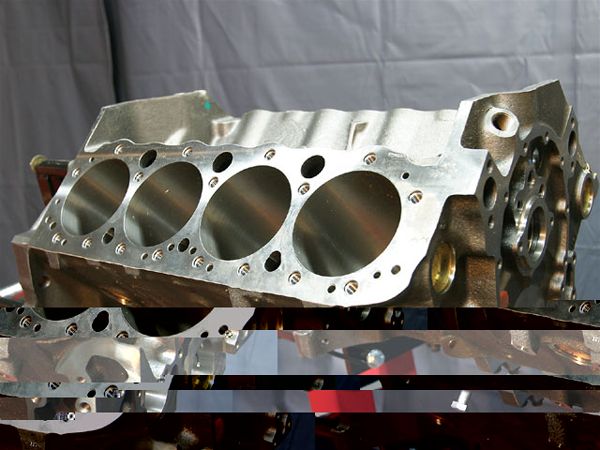
In the Chevy truck arena, the Bowtie Sportsman block by GM Performance Parts is the cat's meow when it comes to performance per dollar spent. Sure, we could have scored one of those super-lightweight aluminum blocks for this project, and it probably would have made gobs of power and torque, but would its lighter weight really provide any added value in this particular application? We didn't think so. The block you see here is made of iron and runs about $2,200 and is quite capable of handling all of our performance goals when paired with the proper internal components.
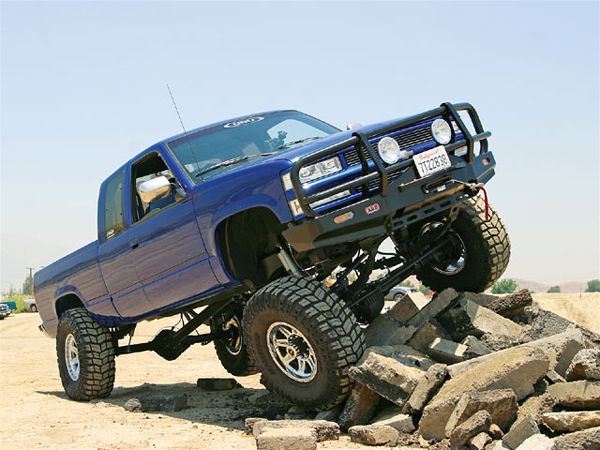
Another great feature included with every Bowtie Sportsman block are three center mains, which feature four bolts each, all with 16-degree splayed or angled outers. These main bearing caps are critical to engine longevity. Instead of just two bolts per cap, GM uses four bolts on these center caps to better secure the crank to the block. We like this method because of the added strength it will provide when we hit the nitrous switch. In this photo, you can also see the oil galleys machined into each of the lower mains. This allows oil to flow freely into the main bearings of the crankshaft, a key feature designed to prolong the life of the bearings.

Some of you may remember this '92 Chevy K-1500. We first showcased this vehicle in "The Lowdown on Four-Wheel-Drive Conversions" (June '05), when we demonstrated how to convert a 4x2 Chevy pickup to four-wheel drive. This rig belongs to Off Road Unlimited (ORU) of Burbank, California, and serves both as shop tugboat, and-hopefully soon-mud-bog showboat. In each case, the requirement for usable torque is paramount. Sporting a clean-looking ARB winch bumper and 1-ton axles, equipped with Detroit traction aids and 38-inch Pro Comp Xterrain tires, this rig excels in almost any wheeling scenario. However, its throttle-body-injected 350, with more than 100,000 miles on the clock, is about as useful as a bucket of nails in the fast lane.
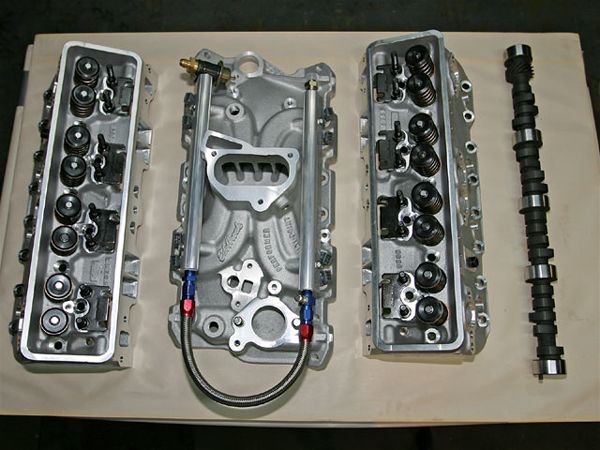
We knew that one of the biggest horsepower limiters of all '87-'95 vintage Chevy trucks and SUVs was their throttle-body fuel-injection setup (TBI). Other than carburetors, TBI is the least effective way to feed fuel to an engine. Throttle-body injection uses two injectors placed above the throttle blades in the air valve. The fuel, after leaving the injector tip, hits these throttle blades. This prevents complete atomization and creates flow restrictions for the fuel that does remain suspended in the air stream, resulting in uneven mixture and distribution. This uneven distribution dramatically reduces performance and lowers fuel efficiency. This ultimately results in sluggish throttle response and overall performance. So we contacted Edelbrock to see if any other fuel-injection options were available for our stroker engine. Luckily for us, they offer what's called the Performer Multipoint EFI conversion systems (Kit No. 3501). This system was designed for all '87-'95 Chevy/GMC trucks with the 5.7L engine. This simple and effective conversion to multipoint fuel injection (MPI) includes the intake manifold, fuel injectors, high-flowing fuel rails, and all the necessary fuel lines. It works with the stock computer and features a CARB E.O. number to ensure smog compliance. With MPI, fuel is injected directly towards each intake valve for improved distribution and better efficiency. This system is calibrated for use with stock compression, a stock cam and heads, or as shown here, Edelbrock's cam (PN 3702) and heads (PN 60859). We elected to run Edelbrock's brand name parts because they have all been tuned specifically to work with the Performer MPI conversion system and will likely deliver the best results.
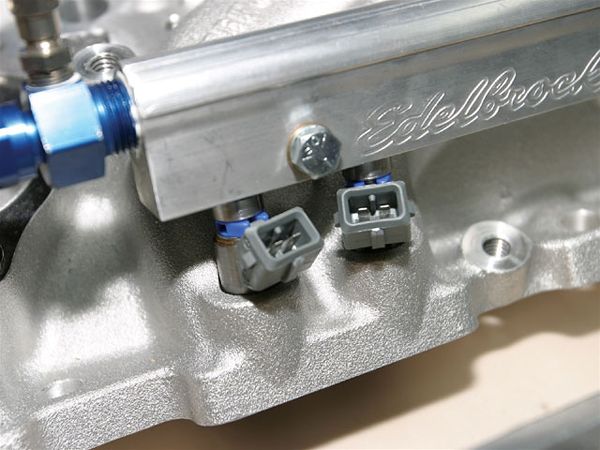
The Performer Multipoint EFI System has two CNC-machined aluminum fuel rails and eight Pico injectors (19 lb/hr @ 45 psi) that spray fuel directly into the cylinder head for improved efficiency and a noticeable gain in performance. The fuel rails feature a 91/416-inch-inner-diameter fuel passage, and a flow-through design with 31/48-inch pipe thread ports on each end. With this system, air is the only thing that flows through the throttle body and manifold, so proper atomization is no longer an issue. When the air combines with the fuel at the intake ports, it is traveling at a greater velocity and improves mixture inside the combustion chamber. This means you get more power from every drop of fuel. The results: Maximum performance, improved fuel economy, and crisp throttle response. All Edelbrock EFI systems use injectors that are angled towards the cylinder head port. This provides superior fuel dispersion for more horsepower and better throttle response off-idle and at part throttle. All necessary hardware is included with the kit.
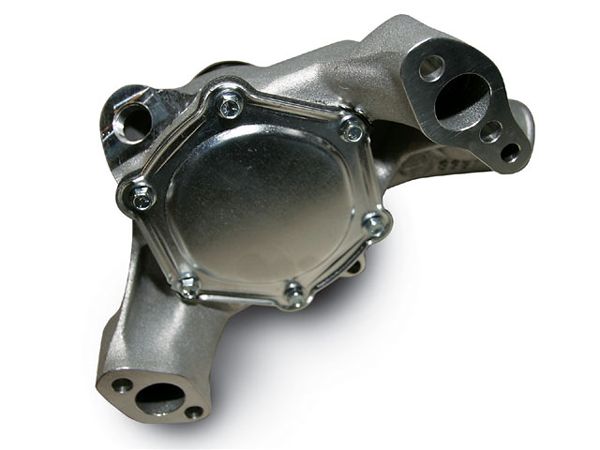
We also sourced a new high-flow water pump from Edelbrock. We like this pump because it features better flow numbers over traditional aftermarket beltdriven pumps and has a simple O-ring sealing surface to help prevent leaks. This particular water pump also features an adjustable cam stop to prevent cam walk. These pumps are available in one of four finishes:
(1) As-Cast-natural satin finish;
(2) Polished-traditional good looks;
(3) what Edelbrock calls PermaStar Finish, a beautiful dark-looking chrome finish, which Edelbrock claims is as durable as a powdercoated finish; and (4) also available, the new EnduraShine finish. EnduraShine matches the brilliant luster of polished aluminum but with the durability of a powdercoated finish. It resists discoloration from heat and has a protective clear top coat which enhances polished aluminum for a fade-free, shiny appearance.
Before starting any type of engine build, it is most important to set up a well lit area free of clutter and dirt. We recommend establishing a dedicated indoor work space of at least 8 by 8 feet. This simple step helps ensure all the small parts and pieces don't get misplaced or mixed up during the project. Below are some additional important tips to ensure your buildup succeeds.








